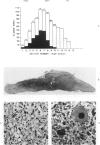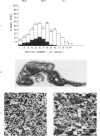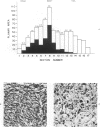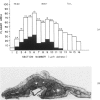Abstract
The syndrome of familial medullary thyroid carcinoma (MTC), pheochromocytoma, and parathyroid hyperplasia is inherited as an autosomal dominant trait, and is characterized by development of bilateral and multicentric thyroidal and adrenal medullary tumors. One of the earliest manifestations of adrenal medullary hyperfunction in patients with this syndrome is an increased ratio of epinephrine to norepinephrine in urine. In order to define the morphologic correlates of these early catecholamine abnormalities in a large kindred with familial MTC, a morphometric analysis based on a point-counting system to asses adrenal medullary volume was undertaken. These studies clearly revealed adrenal medullary hyperplasia as reflected by a two- to three-fold increase in medullary volume and weight as compared to age- and sex-matched controls. The increase in total medullary mass resulted from diffuse and multifocal modular proliferations of adrenal medullary cells primarily within the head and body regions of the glands. These results support the hypothesis that the pheochromocytomas in patients with familial MTC may, in fact, represent extreme degrees of nodular hyperplasia of the medulla.
Full text
PDF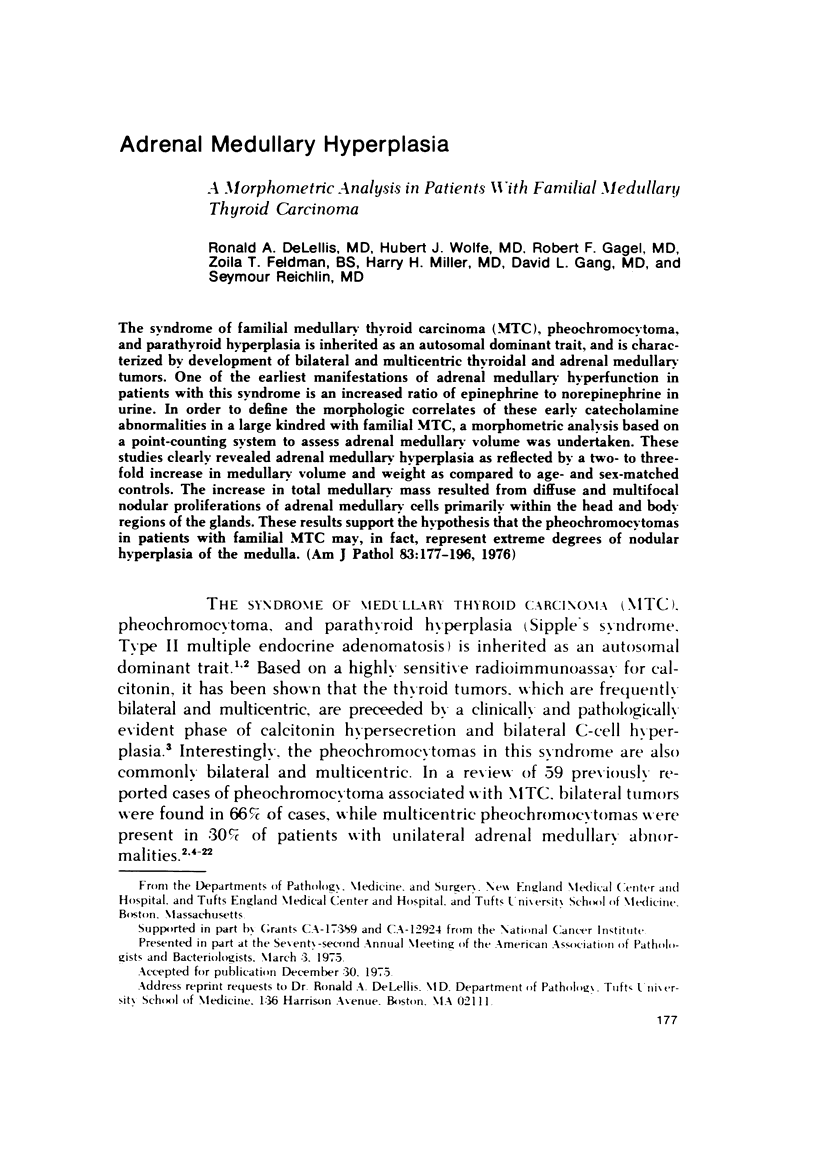
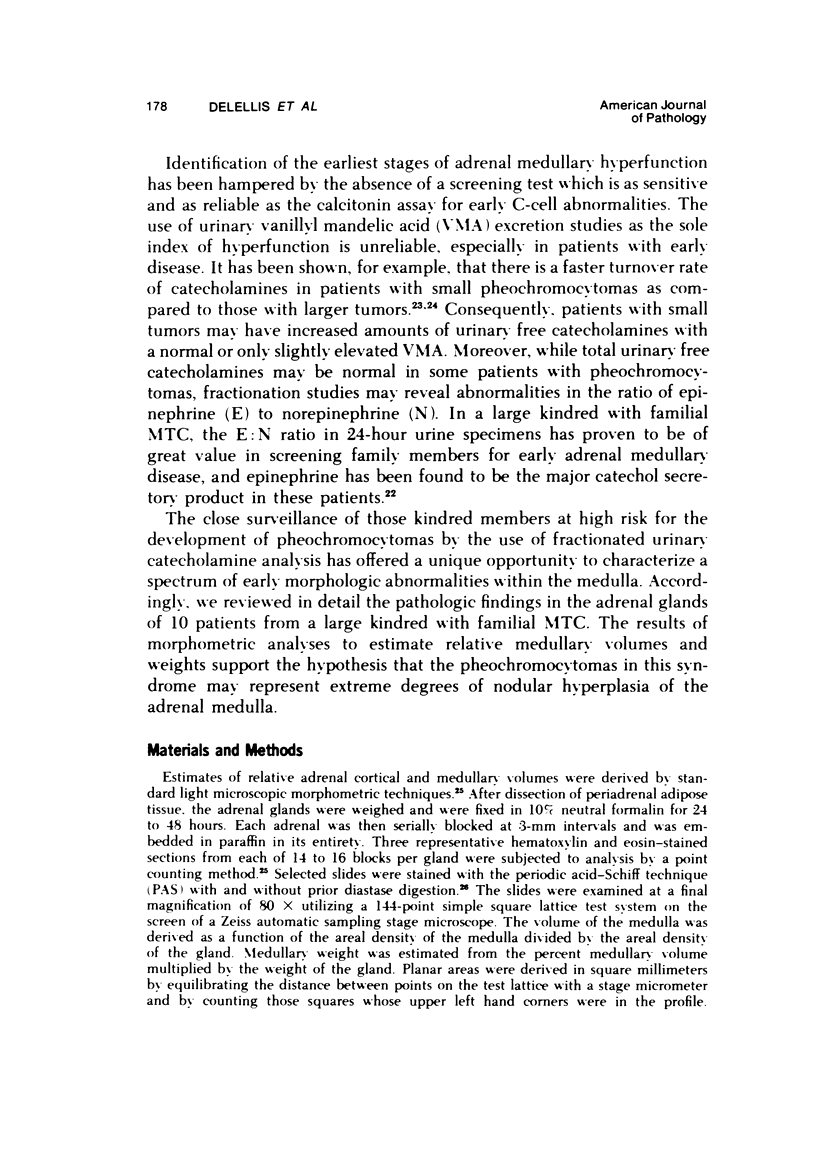
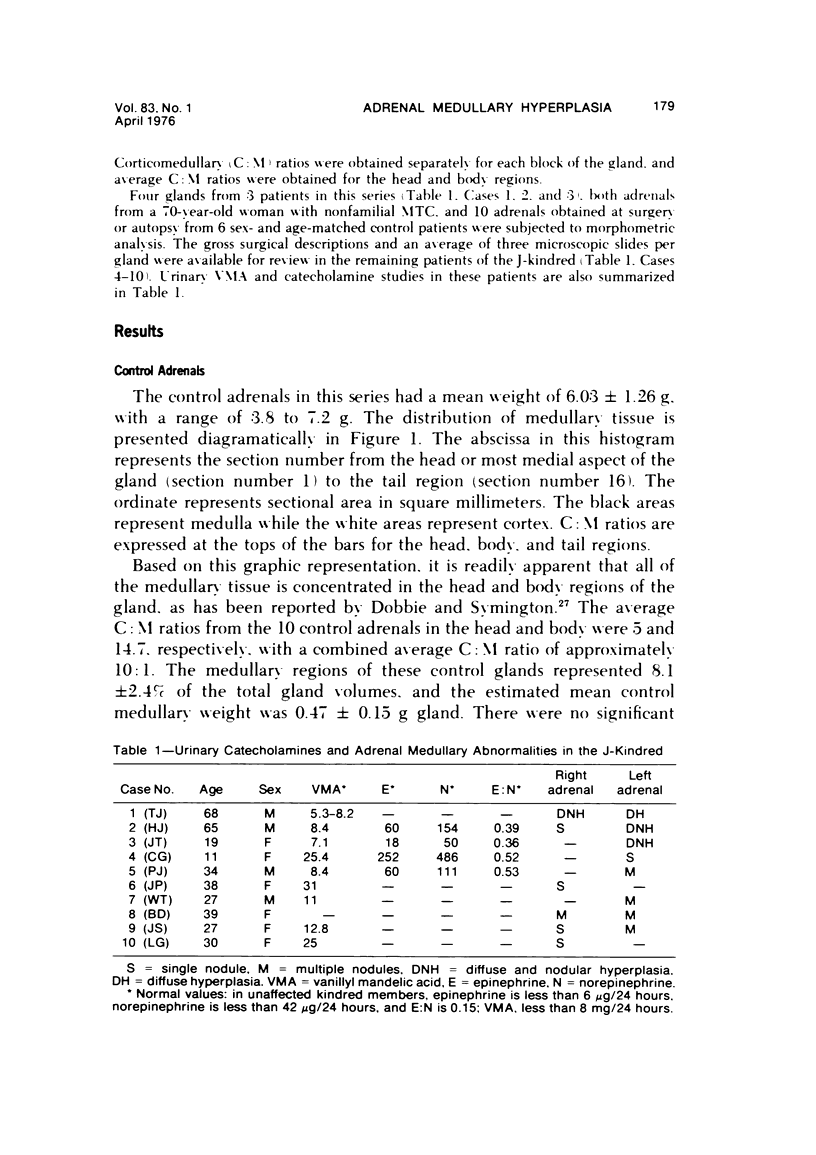
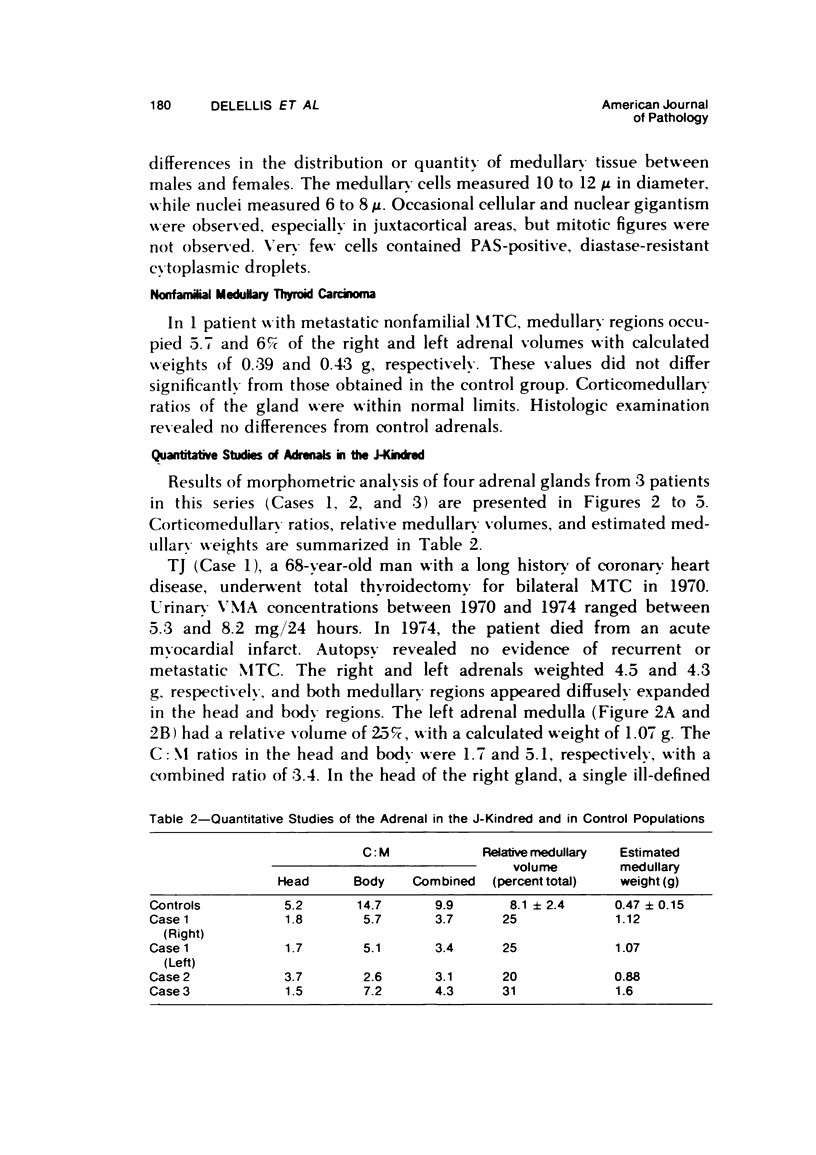
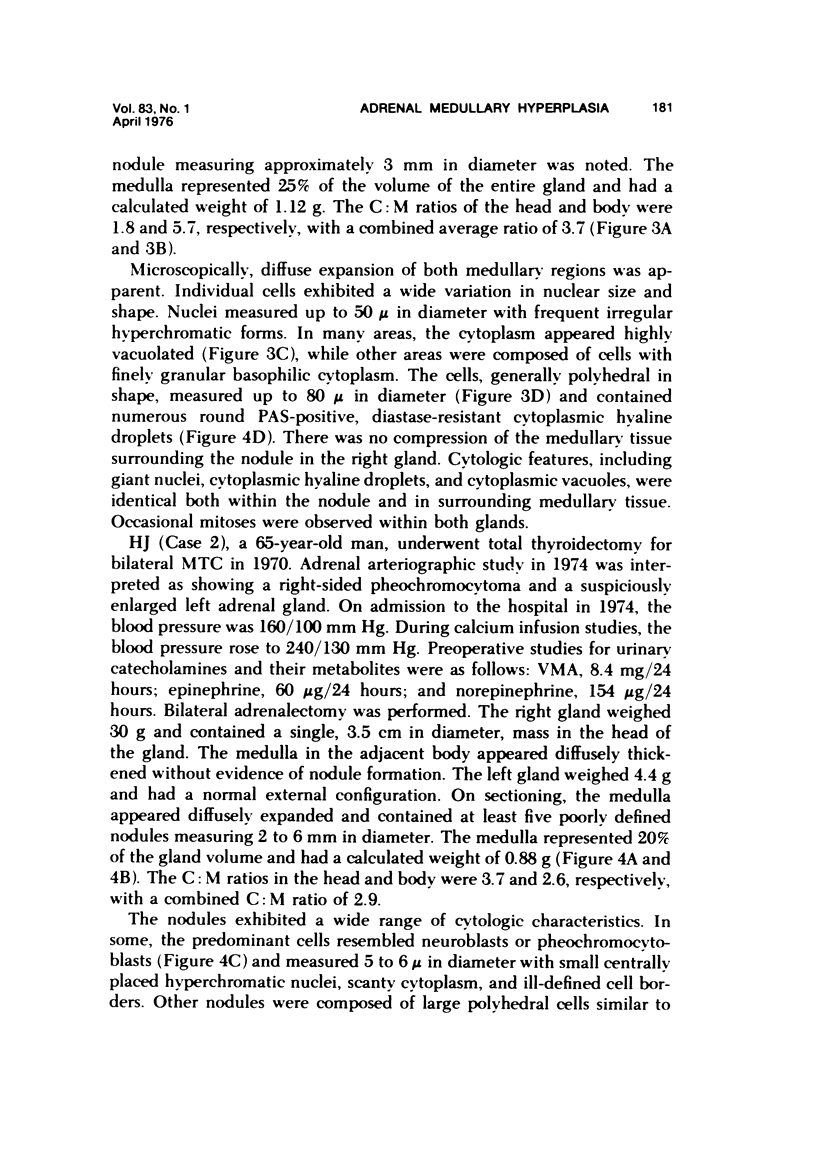
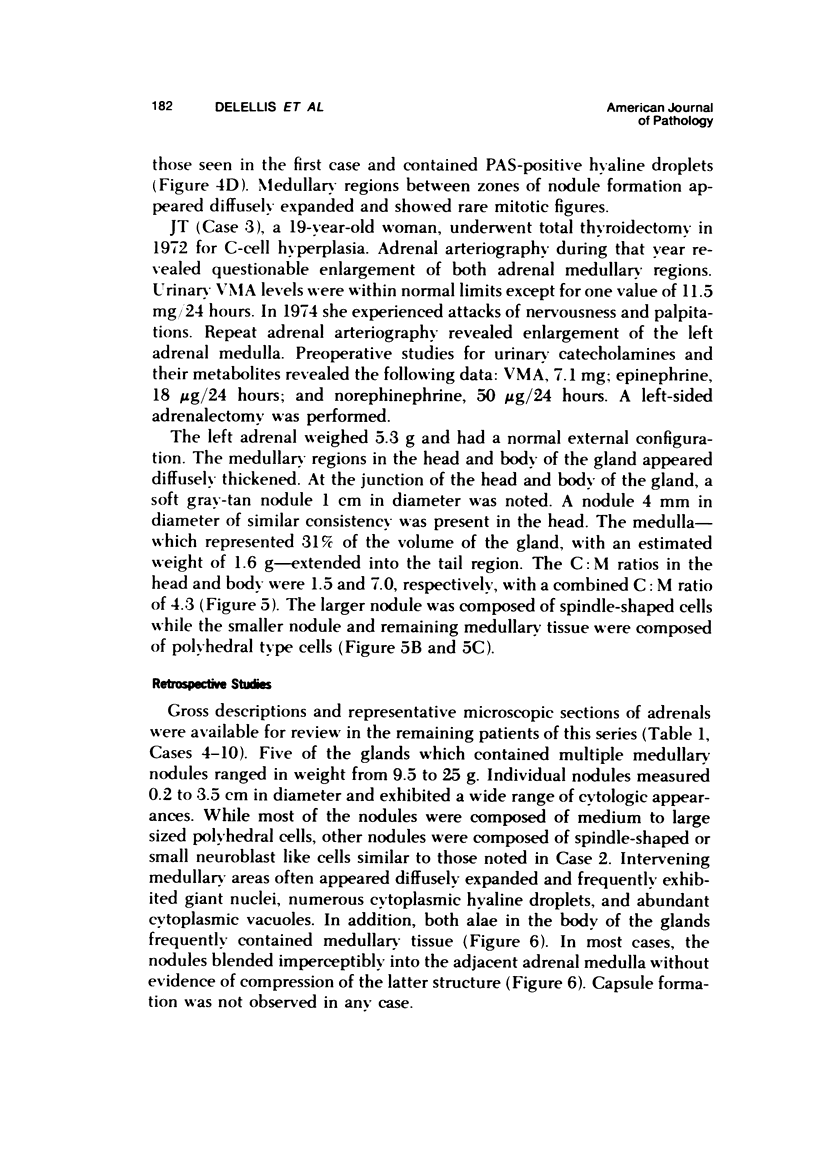

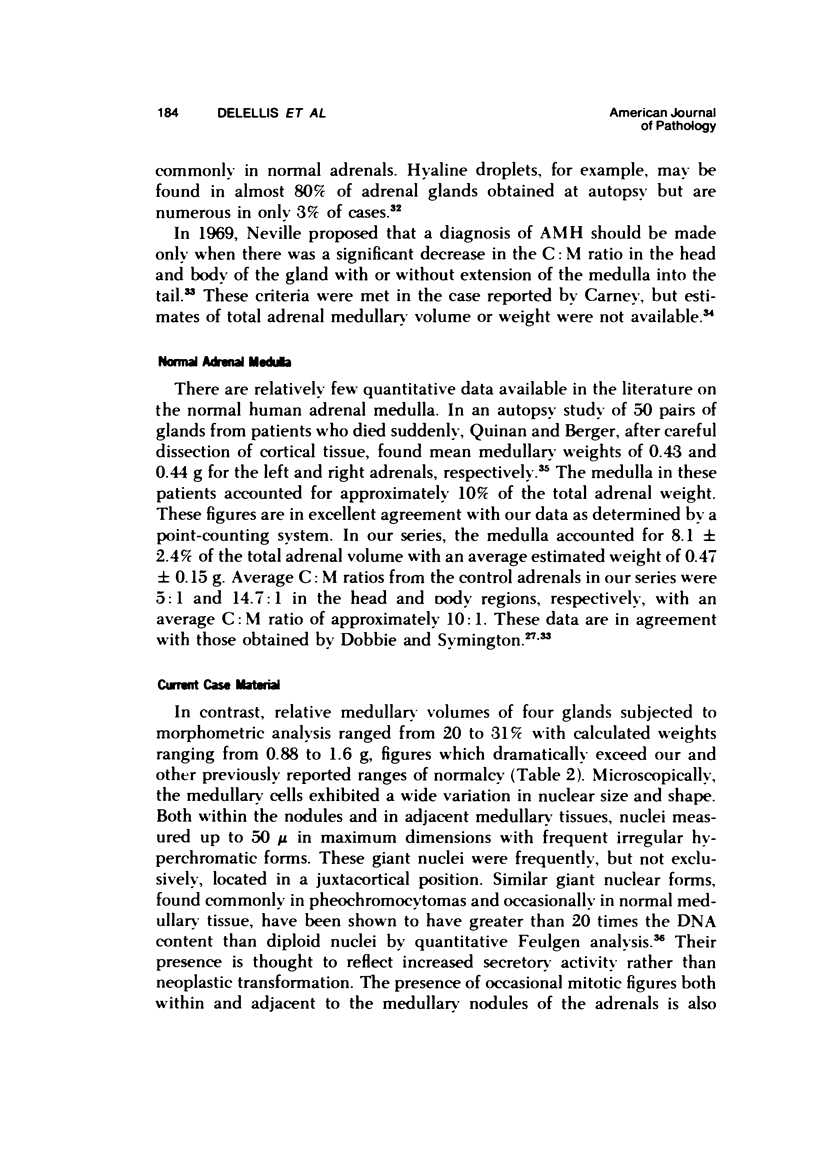
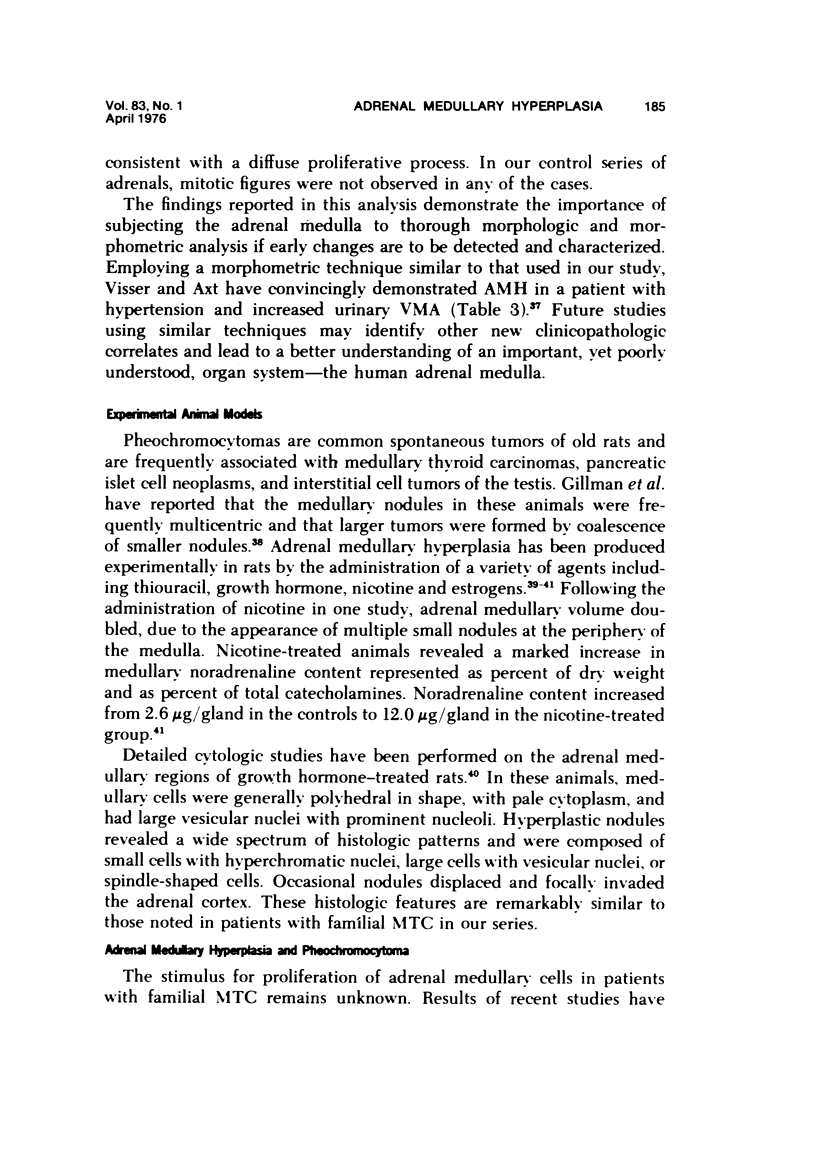
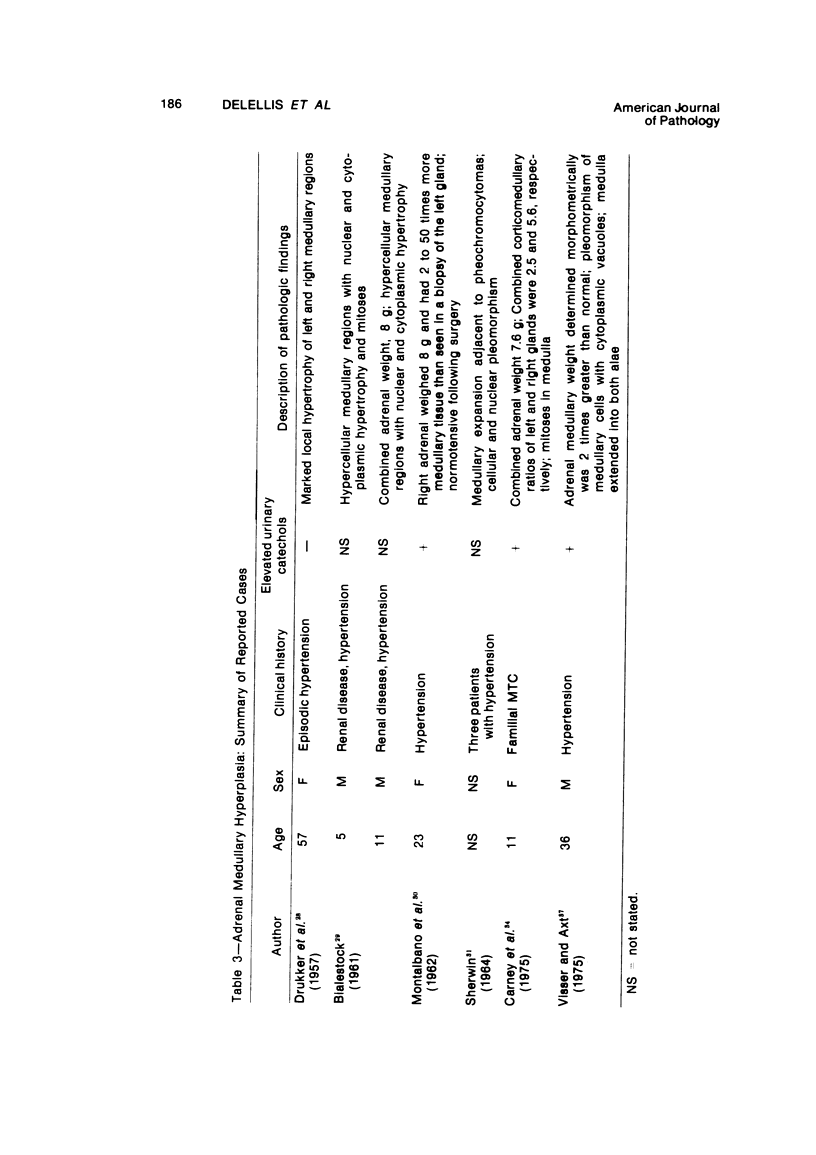
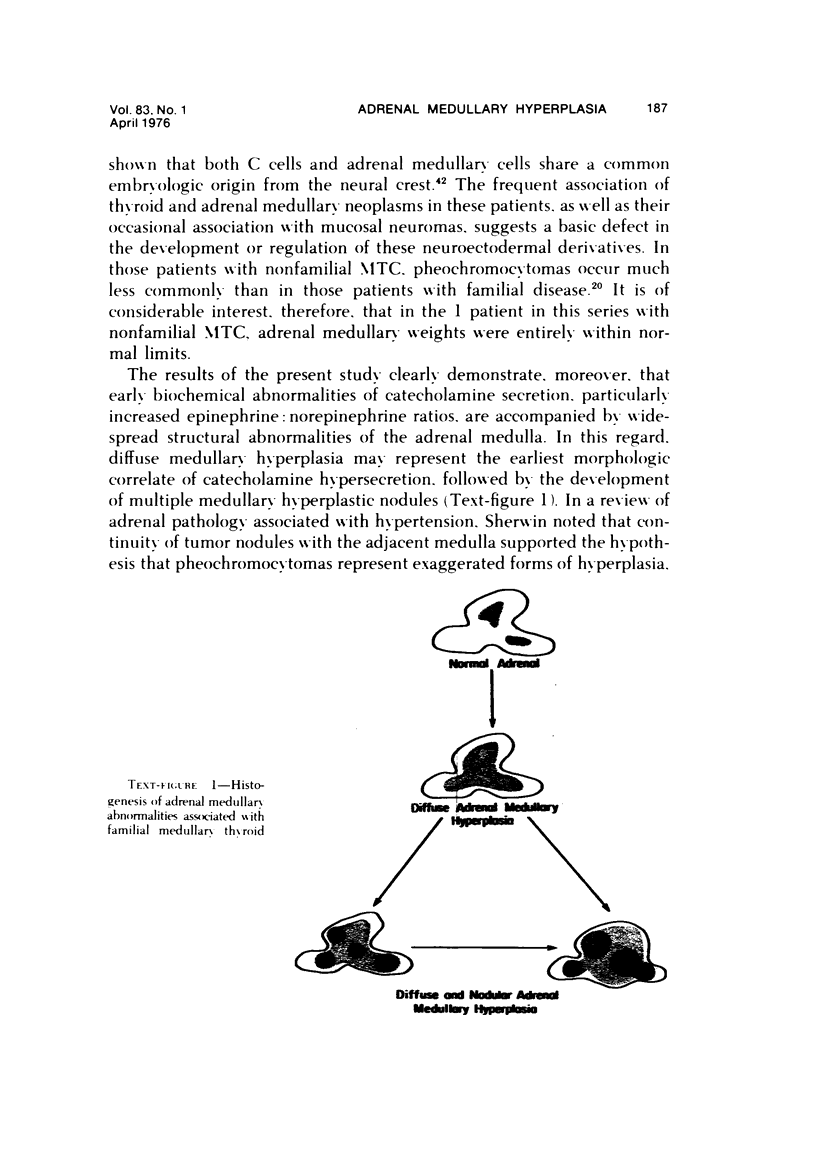
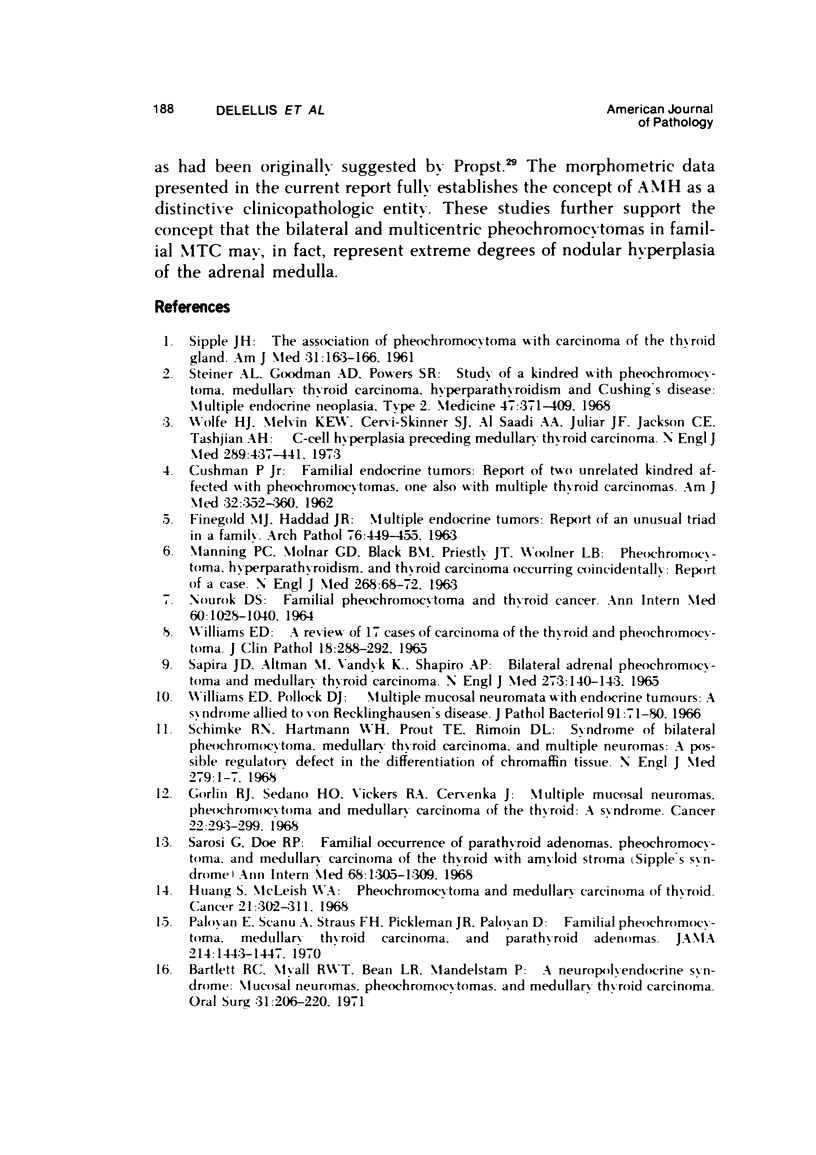
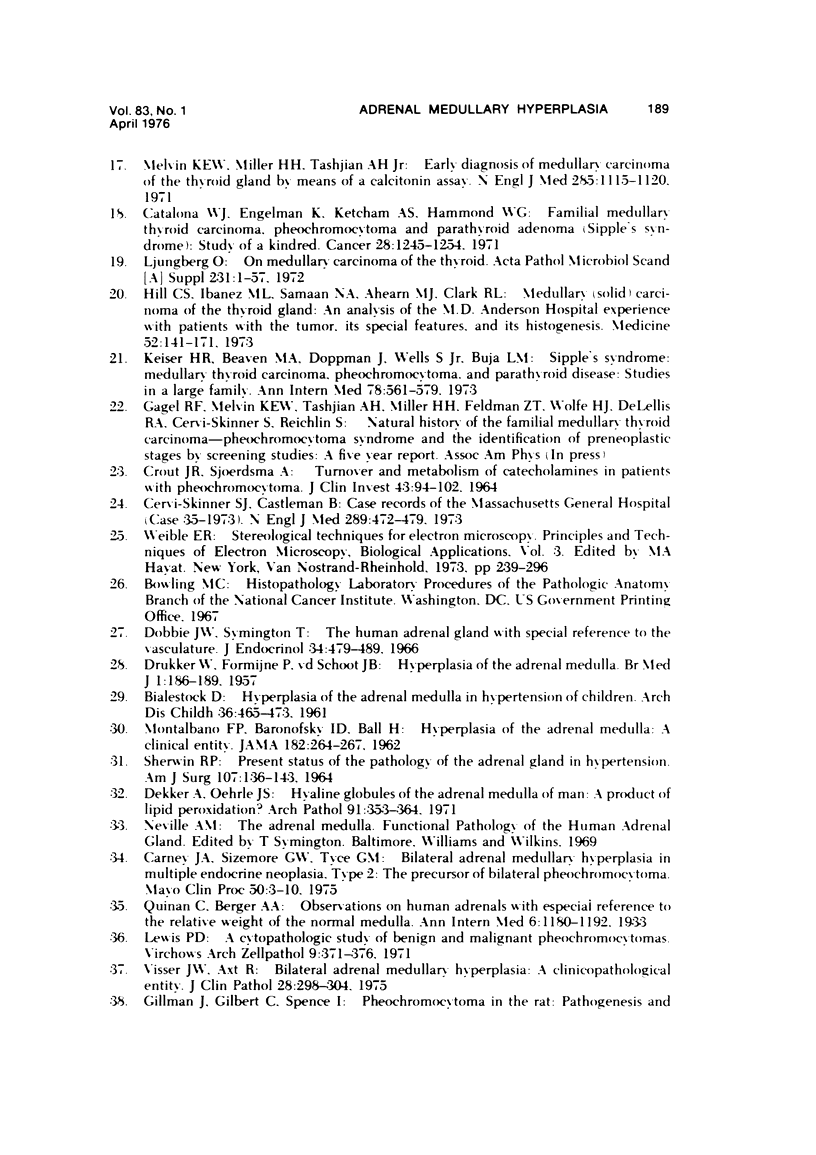

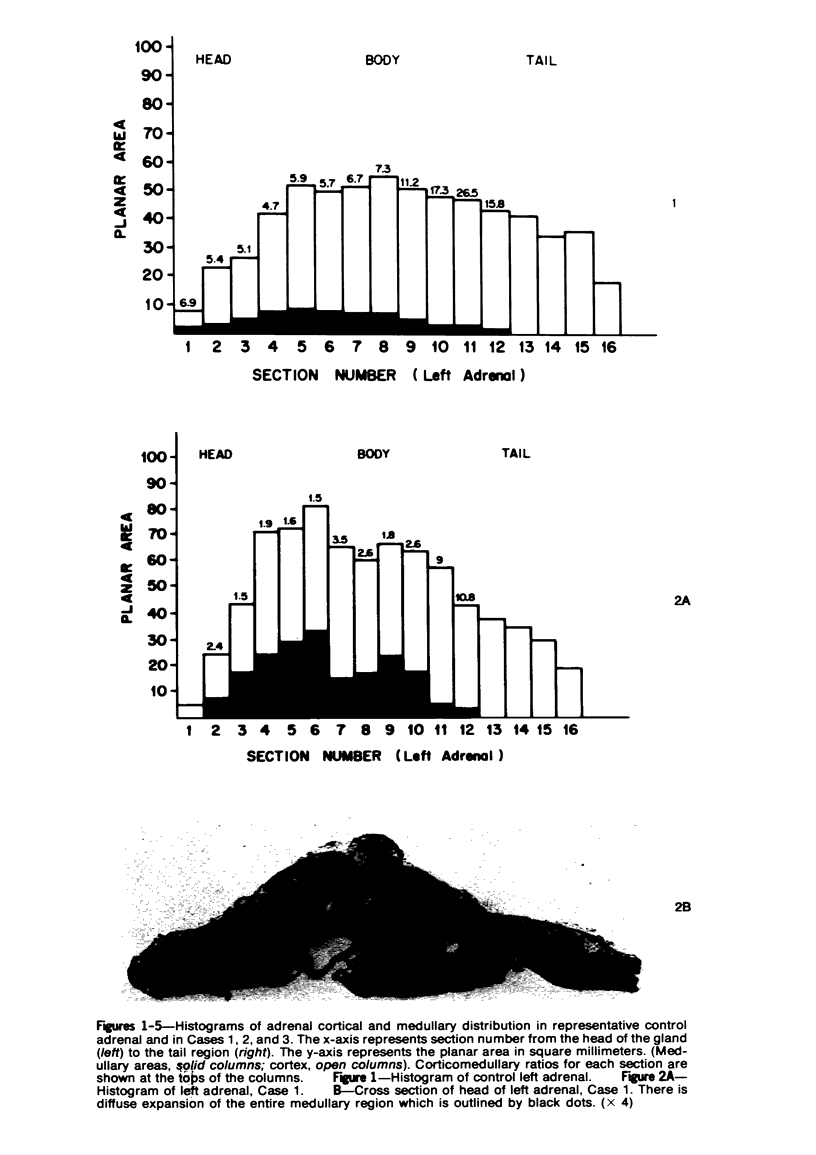
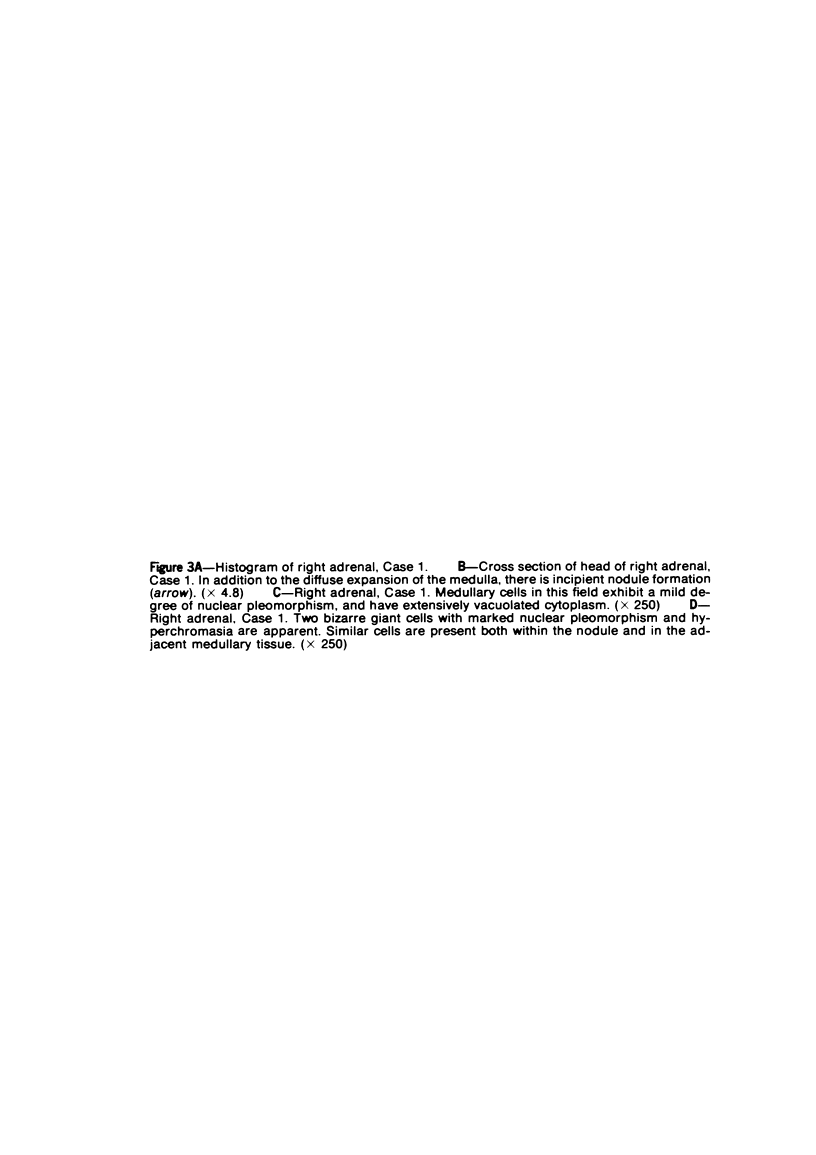
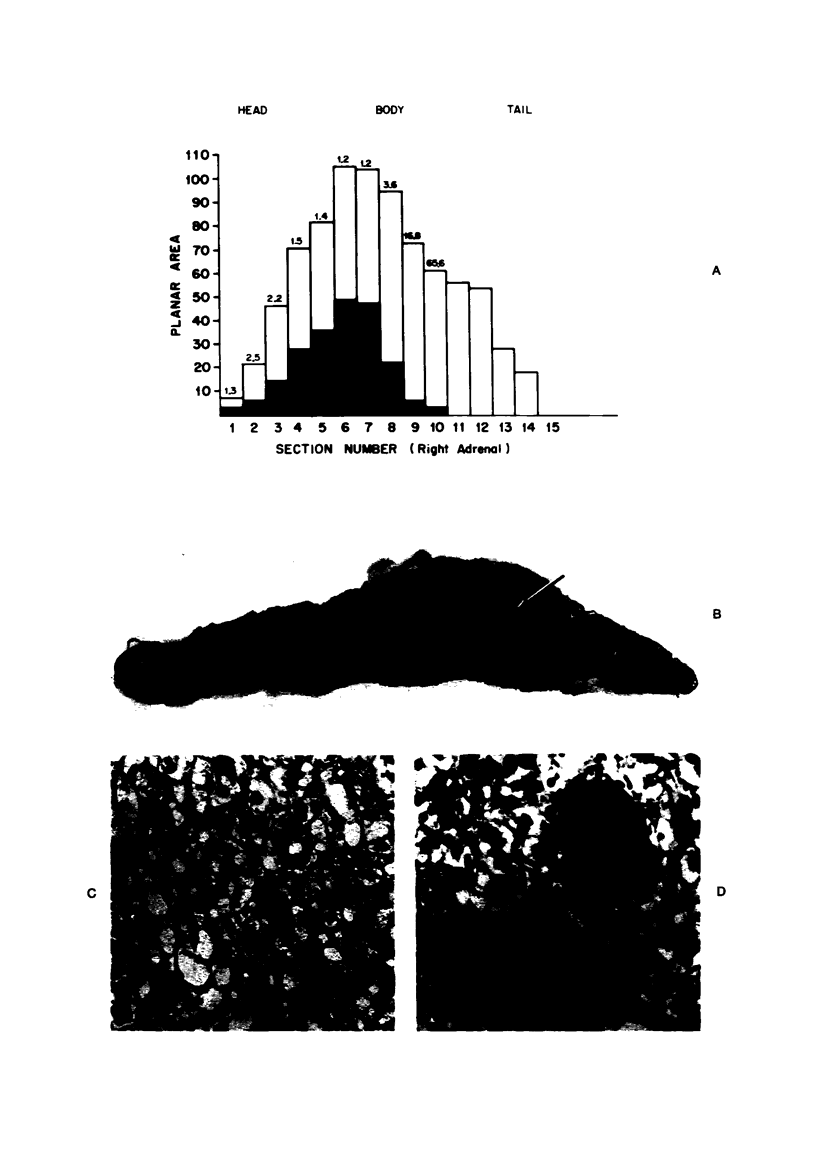
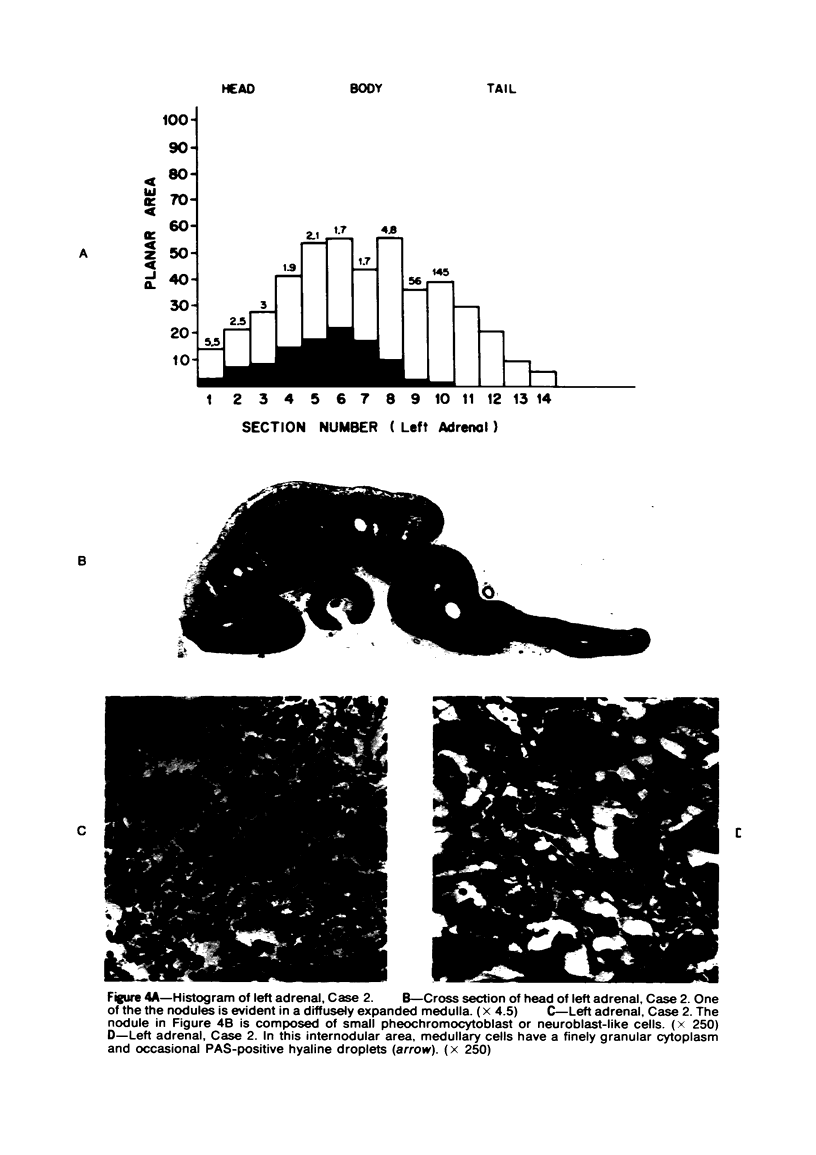
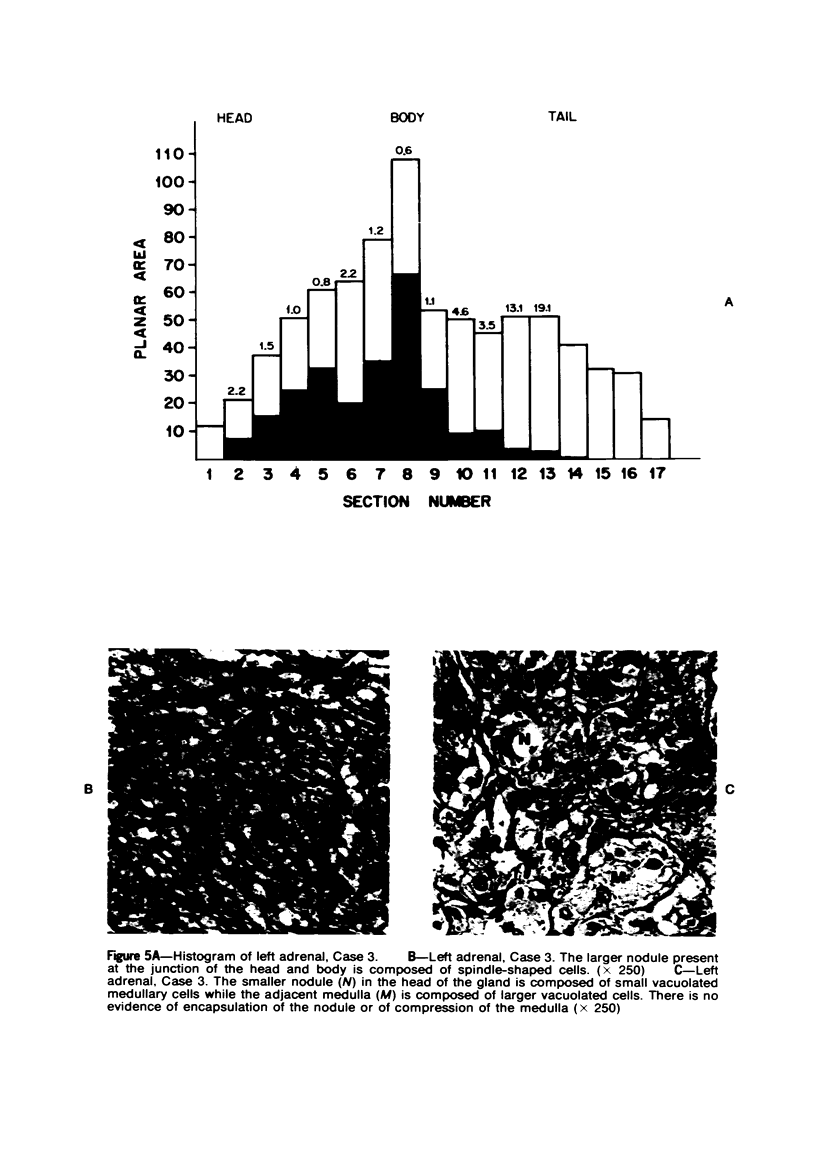
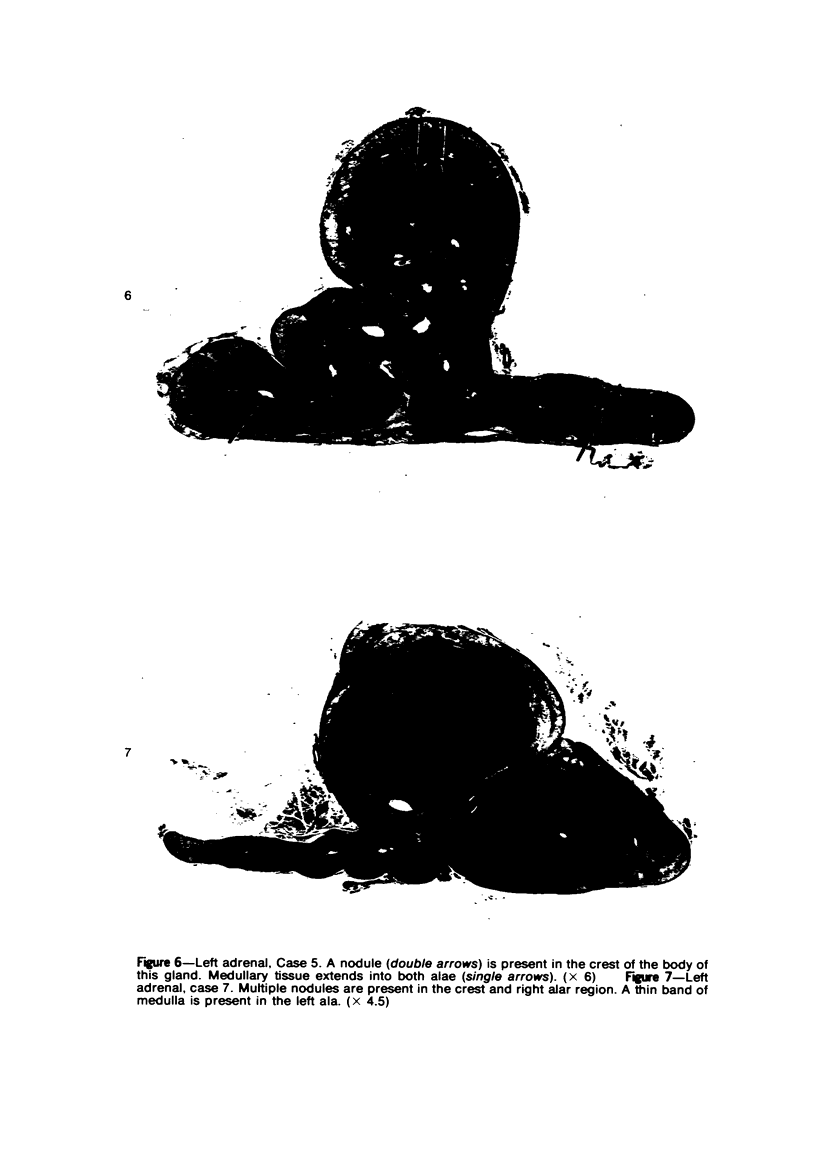
Images in this article
Selected References
These references are in PubMed. This may not be the complete list of references from this article.
- BIALESTOCK D. Hyperplasia of the adrenal medulla in hypertension of children. Arch Dis Child. 1961 Oct;36:465–473. doi: 10.1136/adc.36.189.465. [DOI] [PMC free article] [PubMed] [Google Scholar]
- Bartlett R. C., Myall R. W., Bean L. R., Mandelstam P. A neuropolyendocrine syndrome: mucosal neuromas, pheochromocytoma, and medullary thyroid carcinoma. Oral Surg Oral Med Oral Pathol. 1971 Feb;31(2):206–220. doi: 10.1016/0030-4220(71)90075-2. [DOI] [PubMed] [Google Scholar]
- CUSHMAN P., Jr Familial endocrine tumors; report of two unrelated kindred affected with pheochromocytomas, one also with multiple thyroid carcinomas. Am J Med. 1962 Mar;32:352–360. doi: 10.1016/0002-9343(62)90126-2. [DOI] [PubMed] [Google Scholar]
- Carney J. A., Sizemore G. W., Tyce G. M. Bilateral adrenal medullary hyperplasia in multiple endocrine neoplasia, type 2: the precursor of bilateral pheochromocytoma. Mayo Clin Proc. 1975 Jan;50(1):3–10. [PubMed] [Google Scholar]
- Catalona W. J., Engelman K., Ketcham A. S., Hammond W. G. Familial medullary thyroid carcinoma, pheochromocytoma, and parathyroid adenoma (Sipple's syndrome). Study of a kindred. Cancer. 1971 Nov;28(5):1245–1254. doi: 10.1002/1097-0142(1971)28:5<1245::aid-cncr2820280523>3.0.co;2-e. [DOI] [PubMed] [Google Scholar]
- DRUKKER W., FORMIJNE P., VAN DER SCHOOT J. B. Hyperplasia of the adrenal medulla. Br Med J. 1957 Jan 26;1(5012):186–189. doi: 10.1136/bmj.1.5012.186. [DOI] [PMC free article] [PubMed] [Google Scholar]
- Dekker A., Oehrle J. S. Hyaline globules of the adrenal medulla of man. A product of lipid peroxidation? Arch Pathol. 1971 Apr;91(4):353–364. [PubMed] [Google Scholar]
- Dobbie J. W., Symington T. The human adrenal gland with special reference to the vasculature. J Endocrinol. 1966 Apr;34(4):479–489. doi: 10.1677/joe.0.0340479. [DOI] [PubMed] [Google Scholar]
- ERANKO O. Nodular hyperplasia and increase of noradrenaline content in the adrenal medulla of nicotine-treated rats. Acta Pathol Microbiol Scand. 1955;36(3):210–218. [PubMed] [Google Scholar]
- Hill C. S., Jr, Ibanez M. L., Samaan N. A., Ahearn M. J., Clark R. L. Medullary (solid) carcinoma of the thyroid gland: an analysis of the M. D. Anderson hospital experience with patients with the tumor, its special features, and its histogenesis. Medicine (Baltimore) 1973 Mar;52(2):141–171. [PubMed] [Google Scholar]
- Huang S. N., McLeish W. A. Pheochromocytoma and medullary carcinoma of thyroid. Cancer. 1968 Feb;21(2):302–311. doi: 10.1002/1097-0142(196802)21:2<302::aid-cncr2820210220>3.0.co;2-r. [DOI] [PubMed] [Google Scholar]
- Lewis P. D. A cytophotometric study of benign and malignant phaeochromocytomas. Virchows Arch B Cell Pathol. 1971;9(4):371–376. doi: 10.1007/BF02894059. [DOI] [PubMed] [Google Scholar]
- MOON H. D., SIMPSON M. E., LI C. H., EVANS H. M. Neoplasms in rats treated with pituitary growth hormone; adrenal glands. Cancer Res. 1950 Jun;10(6):364–370. [PubMed] [Google Scholar]
- Paloyan E., Scanu A., Straus F. H., Pickleman J. R., Paloyan D. Familial pheochromocytoma, medullary thyroid carcinoma, and parathyroid adenomas. JAMA. 1970 Nov 23;214(8):1443–1447. [PubMed] [Google Scholar]
- Pearse A. G. The APUD cell concept and its implications in pathology. Pathol Annu. 1974;9(0):27–41. [PubMed] [Google Scholar]
- SAPIRA J. D., ALTMAN M., VANDYK K., SHAPIRO A. P. BILATERAL ADRENAL PHEOCHROMOCYTOMA AND MEDULLARY THYROID CARCINOMA. N Engl J Med. 1965 Jul 15;273:140–143. doi: 10.1056/NEJM196507152730305. [DOI] [PubMed] [Google Scholar]
- SHERWIN R. P. PRESENT STATUS OF THE PATHOLOGY OF THE ADRENAL GLAND IN HYPERTENSION. Am J Surg. 1964 Jan;107:136–143. doi: 10.1016/0002-9610(64)90249-1. [DOI] [PubMed] [Google Scholar]
- Sarosi G., Doe R. P. Familial occurrence of parathyroid adenomas, pheochromocytoma, and medullary carcinoma of the thyroid with amyloid stroma (Sipple's syndrome). Ann Intern Med. 1968 Jun;68(6):1305–1309. doi: 10.7326/0003-4819-68-6-1305. [DOI] [PubMed] [Google Scholar]
- Steiner A. L., Goodman A. D., Powers S. R. Study of a kindred with pheochromocytoma, medullary thyroid carcinoma, hyperparathyroidism and Cushing's disease: multiple endocrine neoplasia, type 2. Medicine (Baltimore) 1968 Sep;47(5):371–409. doi: 10.1097/00005792-196809000-00001. [DOI] [PubMed] [Google Scholar]
- Visser J. W., Axt R. Bilateral adrenal medullary hyperplasia: a clinicopathological entity. J Clin Pathol. 1975 Apr;28(4):298–304. doi: 10.1136/jcp.28.4.298. [DOI] [PMC free article] [PubMed] [Google Scholar]
- WILLIAMS E. D. A REVIEW OF 17 CASES OF CARCINOMA OF THE THYROID AND PHAEOCHROMOCYTOMA. J Clin Pathol. 1965 May;18:288–292. doi: 10.1136/jcp.18.3.288. [DOI] [PMC free article] [PubMed] [Google Scholar]
- Wolfe H. J., Melvin K. E., Cervi-Skinner S. J., Saadi A. A., Juliar J. F., Jackson C. E., Tashjian A. H., Jr C-cell hyperplasia preceding medullary thyroid carcinoma. N Engl J Med. 1973 Aug 30;289(9):437–441. doi: 10.1056/NEJM197308302890901. [DOI] [PubMed] [Google Scholar]



